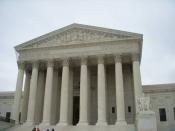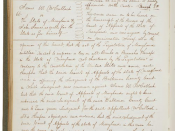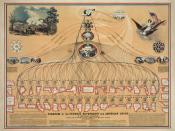Throughout the history of the United States, the Supreme Court has made decisions both for and against the federal Government. It would be impossible to say that, when looking at the scope of history, the court has been biased one way or another. It is possible though, to show that at different times in history the Supreme Court did lean one way or another. Because the Supreme Court plays such a big role in congress' power over the states, its decisions mimic the balance of state and federal power.
When our nation was young, the Supreme Court tended to side with the federal government. In 1819, the state of Maryland tried to tax the Second Bank of the United States. They wanted to tax all bank notes that were not chartered in Maryland. At this time, the Second Bank of the United States was the only bank in Maryland that did not print its notes in state.
Because of this, the tax was generally recognized as being targeted at the Second Bank of the United States. In state courts, Maryland argued that because the constitution did not specifically authorize the federal government to create a bank, the Second Bank of the United States was unconstitutional (McCulloch). The Maryland state court ruled in the state's favor. The case was appealed to the Supreme Court. The federal government argued that the power to create the Bank of the United States was given in the necessary and proper clause. The Supreme Court overturned the previous ruling and favored the national government. This set two new precedents. First, it solidified the elastic clause and legitimized Congresses' implied powers (McCulloch). Secondly, it showed that the states could not impede the federal government. It showed that the federal government trumped the states under the supremacy clause...



Federalism Case Study
This is a very impressive essay. The material is very challenging, and I am quite impressed that the student has managed to deal with a number of issues that I would not expect a high-school student to handle so skillfully.
BRAVO!
1 out of 1 people found this comment useful.